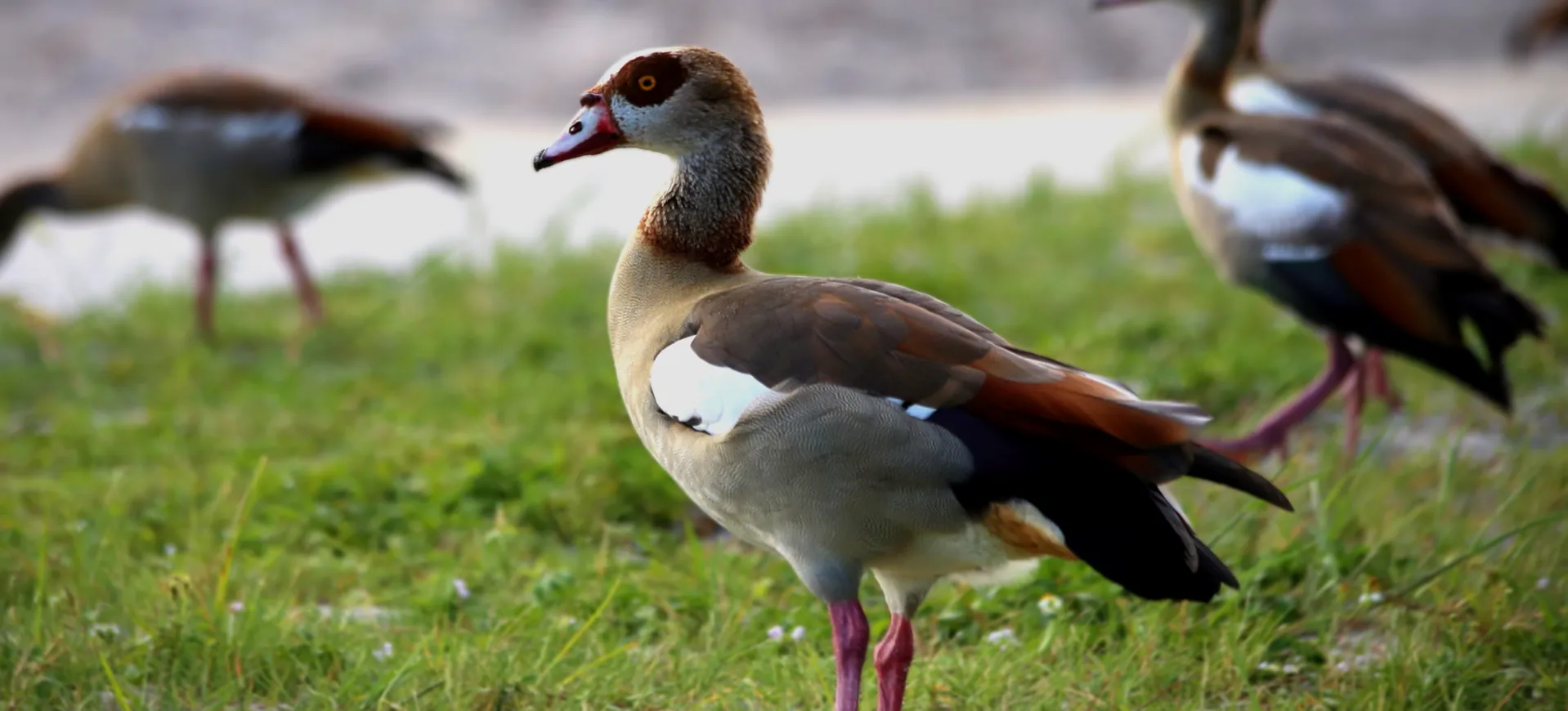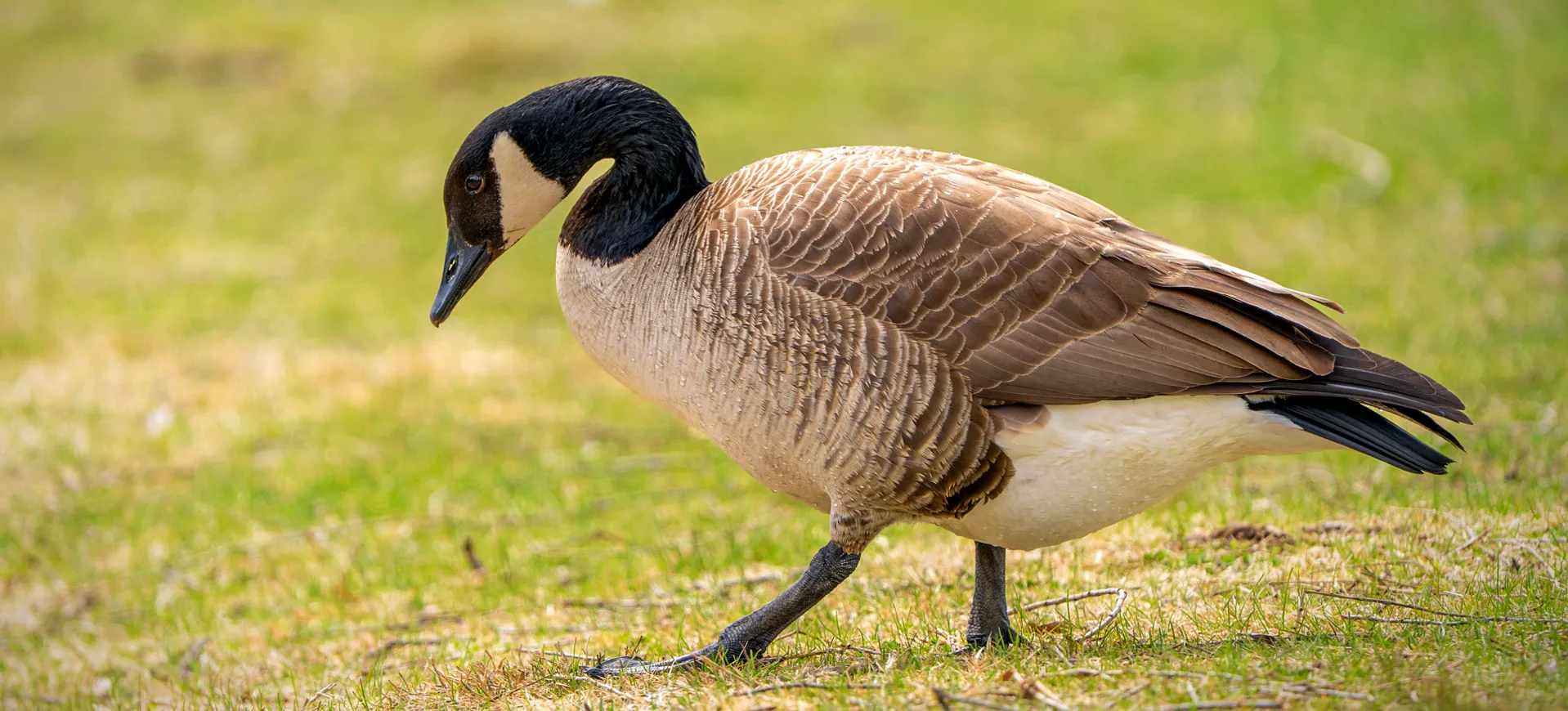Overview
The White-faced Whistling Duck, scientifically known as Dendrocygna viduata, is a distinctive species of waterfowl known for its characteristic whistling call. It exhibits a striking appearance with a long neck, brown plumage, and a unique white face extending from the beak to the eye and down to the throat. Males and females are similar in appearance, though males are slightly larger and have a more pronounced white face and neck. These ducks are highly social and often found in large flocks. They are known for their loud and melodious whistling sounds, especially at dawn and dusk.
Native to sub-Saharan Africa and parts of South America, the White-faced Whistling Duck inhabits a range of wetland habitats, including freshwater lakes, marshes, and rivers. They prefer environments with abundant aquatic vegetation, which provide essential food sources and nesting materials. These ducks are also commonly found in man-made habitats such as reservoirs and rice paddies. Their adaptability to natural and modified wetlands is a key factor in their widespread distribution.
As their name suggests, White-faced Whistling Ducks are known for their distinctive whistling calls, which play an important role in communication within flocks. These ducks are omnivorous, feeding on various plant materials like seeds and leaves and small aquatic animals. They typically feed at night, using their long necks to reach food in shallow waters or grazing on land. Their feeding habits are versatile, allowing them to exploit various food sources in their habitats.
Taxonomy
Kingdom
Phylum
Class
Order
Family
Genus
Species
Type
Physical Description:
The White-faced Whistling Duck is a medium-sized bird, notable for its slender body, long neck, and legs. Adults typically have a brownish-black plumage, a striking white face and throat, and a chestnut brown chest. Their eyes are dark, and their legs and feet are grayish-blue. The most distinctive feature is their white facial markings, which contrast sharply with the dark plumage of the head.
These ducks measure about 17 to 19 inches long, with a wingspan ranging from 34 to 37 inches. Their long legs are well-adapted for walking on land, making them more terrestrial than other duck species. White-faced Whistling Ducks weigh approximately 1.5 to 2 pounds, with males slightly heavier than females. Their elongated body, neck, and broad wings give them a distinctive silhouette in flight.

Lifespan: Wild: ~15 years || Captivity: ~20 years

Weight: Male: 1.6–2.2 lbs (750–1000 g) || Female: 1.5–1.9 lbs (700–850 g)

Length: Male & Female: 17–19 in (43–48 cm)

Wingspan: Male & Female: 34–37 in (86–94 cm)

Top Speed: 37 mph (60 km/h)
Characteristic:
Native Habitat:
The White-faced Whistling Duck inhabits many wetland habitats across sub-Saharan Africa and parts of South America. They are found in various freshwater environments in Africa, including lakes, rivers, marshes, and floodplains. These habitats provide ample food sources essential for their breeding and roosting needs. In South America, their distribution includes the eastern and northern regions, where they inhabit similar wetland environments.
Their preference for habitats with abundant aquatic vegetation is crucial for feeding and nesting. The ducks often nest in dense vegetation near water, protecting their eggs and ducklings. Their adaptability to different types of wetlands, including man-made ones like rice paddies and reservoirs, contributes to their widespread distribution and success as a species in diverse environments.
Biomes:
Biogeographical Realms:
Continents:
Countries:
Diet:
Diet & Feeding Habits:
White-faced Whistling Ducks are omnivorous, with a diet that includes plant and animal matter. They feed on seeds, leaves, and stems of aquatic and terrestrial plants and small aquatic animals like insects, snails, and crustaceans. Their feeding strategy involves dabbling in shallow water and foraging on land, often in groups. At night, they become more active in searching for food, taking advantage of cooler temperatures and reduced predation risk.
Their long necks enable them to reach food underwater without diving, and their bills are adapted for filtering small food items from the water. They also graze on land, feeding on grasses and grains, sometimes leading them into agricultural areas. This versatility in feeding habits allows them to exploit different environments and food sources. The social nature of their feeding behavior, often foraging in large flocks, also enhances their efficiency in locating and obtaining food.
Mating Behavior:
Mating Description:
White-faced Whistling Ducks are monogamous, often forming long-term pair bonds. During the breeding season, they engage in various courtship displays, including vocal duets and synchronized swimming, to strengthen pair bonds and establish breeding territories. The male’s prominent whistling call is a key part of the courtship ritual, used to attract females and communicate with the flock. Once paired, these ducks exhibit strong cooperative behavior, with both parents involved in nesting and raising the young.
Nesting typically takes place in dense vegetation near water. The female lays a clutch of 8 to 12 eggs, which both parents incubate for 24 to 30 days. The nest is often a simple structure hidden among reeds or grasses. After hatching, the ducklings are precocial, able to swim and feed themselves almost immediately, but they remain under the close supervision of their parents for several weeks.
Reproduction Season:
Birth Type:
Pregnancy Duration:
Female Name:
Male Name:
Baby Name:
Social Structure Description:
White-faced Whistling Ducks exhibit highly social behavior, often found in large flocks, particularly outside the breeding season. These flocks provide safety in numbers from predators and enhance foraging efficiency. During the breeding season, they form monogamous pairs, showing a degree of territoriality around their nesting sites.
The social structure of these ducks is also characterized by their vocal communication, with the distinctive whistling calls playing a key role in maintaining flock cohesion and social bonds. These calls are used for various purposes, including signaling alarm, maintaining contact between flock members, and coordinating movements. The strong social bonds and cooperative behaviors observed in White-faced Whistling Ducks are essential to their ecology and survival.
Groups:
Conservation Status:
Population Trend:
The population of White-faced Whistling Ducks is considered stable and healthy, with no major threats currently leading to a significant decline. They are widespread in their range across sub-Saharan Africa and South America. During the breeding season, they are typically found in pairs or small family groups, indicating successful breeding and rearing of young.
White-faced Whistling Ducks often form large flocks in non-breeding periods, including hundreds or thousands of individuals. These gatherings are particularly common in areas where food and water are abundant. The adaptability of their diet and habitat preferences contributes to their ability to thrive in various environments, ensuring the stability of their populations.
Population Threats:
The primary threats to White-faced Whistling Ducks include habitat loss and degradation, particularly in wetlands. Drainage of wetlands for agriculture, urban development, and pollution can reduce the availability and quality of their habitats. Hunting and egg collection in some regions also pose threats, although these are not widespread issues.
Climate change is a potential long-term threat, as it can lead to changes in wetland ecosystems and water availability. Droughts and changes in rainfall patterns can affect the distribution and abundance of these ducks. Despite these challenges, their wide distribution and generalist feeding habits have helped them maintain stable populations.
Conservation Efforts:
Conservation efforts for White-faced Whistling Ducks largely focus on preserving and managing wetland habitats. This involves protecting existing wetlands from drainage and degradation and restoring damaged wetlands. International cooperation is essential, given the species’ wide distribution across continents.
In addition to habitat conservation, monitoring and research are important for understanding their population dynamics and ecological needs. Education and awareness programs can help reduce hunting pressures and promote the importance of wetland conservation. Sustainable land-use practices, especially in agriculture, can also contribute to conserving these ducks and their habitats.
Additional Resources:
Fun Facts
- The White-faced Whistling Duck’s call is not just a single note but a series of musical whistles, which can be heard over long distances, especially in the quiet of early morning or evening.
- Unlike many other duck species, White-faced Whistling Ducks have longer legs, allowing them to walk and graze on land more efficiently.
- They are one of the few duck species that roost in trees, owing to their long legs and strong claws that make them more adept at perching.
- These ducks have a unique habit of lining up in rows when sleeping on water, often with their heads tucked under a wing.
- White-faced Whistling Ducks are known for their strong and swift flying capabilities, capable of long-distance flights during local migrations.
- They are highly adaptable and have thrived in urban areas, taking advantage of city parks and artificial water bodies.
- In some cultures, the White-faced Whistling Duck symbolizes good luck and harmony, likely due to its peaceful and social nature.
- They have a remarkable ability to locate water sources, which is crucial for their survival in the varied landscapes they inhabit.
- During courtship, these ducks perform a ‘dance’ that includes synchronized swimming and bobbing movements, creating a captivating display.
- White-faced Whistling Ducks’ strong social structure and group dynamics play a crucial role in their defense strategies against predators, relying on collective vigilance and warning calls.















































































